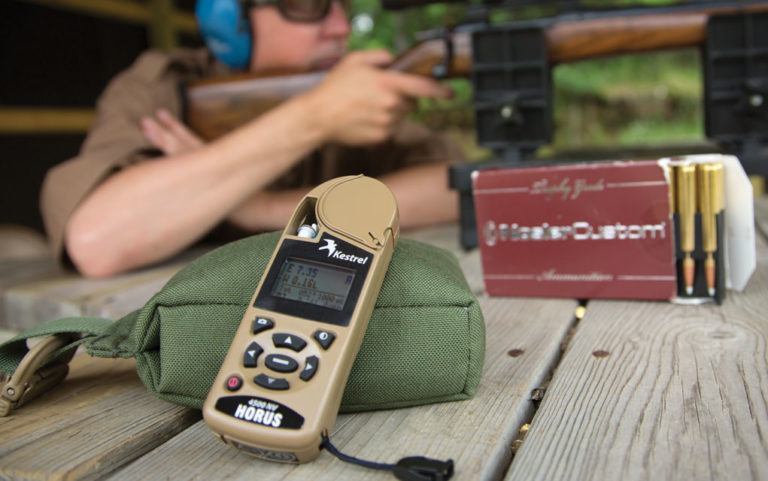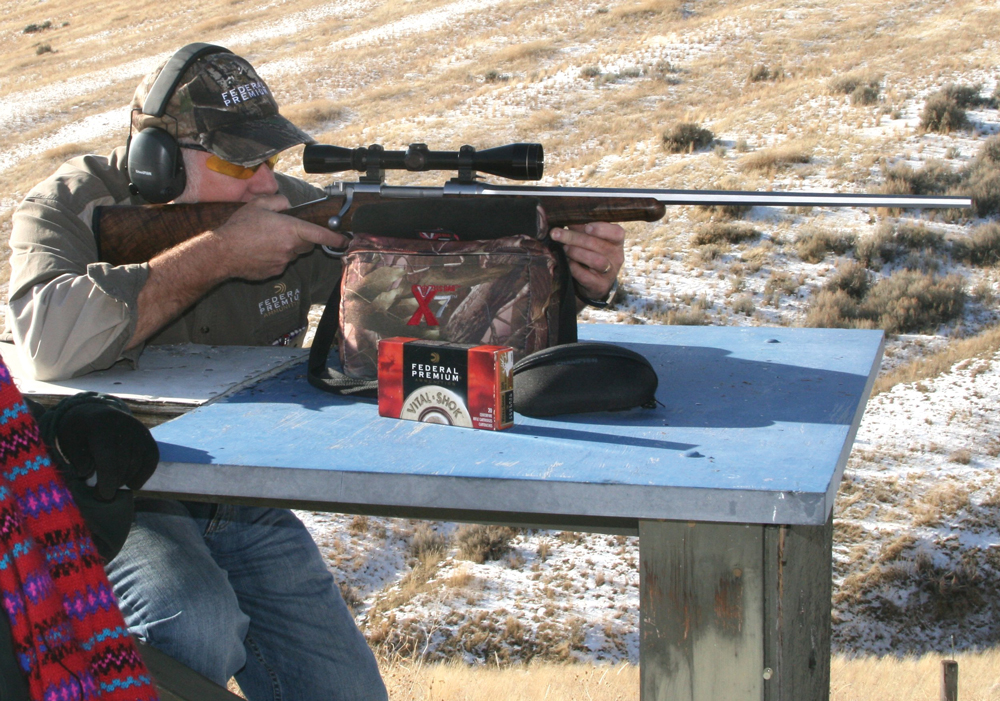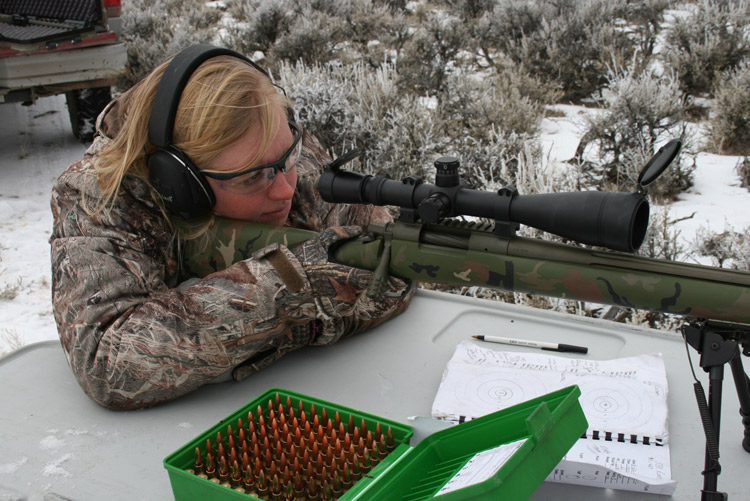
At extended ranges, air pressure alters bullet flight — and impact — more than you might think.
How does air pressure influence a bullet's trajectory?
- Denser air slows a bullet, thus exposes to more of gravities effects.
- More air pressure, due to elevation or weather patterns, results in denser air.
- For shooting purposes, barometric pressure is of little use.
- Instead, station pressure provides the data required.
- Ballistic calculators are often required to figure out effects of air pressures on a bullet.
In past articles, I’ve dissected how gravity and wind are the two main variables that affect your bullet’s path. Yes, other environmental variables matter, too; however, they only change how much of an effect gravity and wind will have.

The reason your bullet falls more by the time it reaches a 900-yard target than it does for a 100-yard target is because it was exposed to gravity longer. Therefore, the longer it takes a bullet to reach the target, the more gravity and wind will move the bullet off of its original flight path.
A Bullet’s Speed
There are three variables that determine a bullet’s speed on its way to the target:
- The initial speed of the bullet
- The efficiency of the bullet
- The external and environmental variables
In discussing a bullet’s speed, we’ve already covered the initial speed of the bullet and the aerodynamic efficiency of the bullet. Now it’s time to explore environmental variables.
The environmental variables that affect a bullet’s path are:
- Air pressure
- Temperature
- Humidity
There are also things called “spin drift” and the Coriolis (and Eötvös) Effect that can change your bullet’s path. However, we’ll save those for future discussions.
Air Density
Each of the three listed variables can change the density of the air. Simply, a bullet doesn’t travel as well through denser/thicker air.
Therefore, a bullet will slow down faster in dense, thick air than it will in less-dense, thinner air. Why does this matter? A bullet that slows down more will take longer to reach a target — and be moved off of its original path more by gravity and wind.

Remember this:
Denser air = slower bullet = lower impact on a target
Going forward, we’re going to explore each of the three variables that affect air’s density individually because each are extremely important to understand. In this column, we’re going to explore air pressure.
Can You Handle The Pressure?
More air pressure results in denser air. The air’s pressure will change based on certain weather patterns and also the altitude. As a general rule, air pressure is lower the higher you are above sea level, and vice versa.
This is because air actually has some mass and is pulled down by gravity. At higher altitudes, there are fewer air molecules being pulled down on your head than there are at lower altitudes. Compare this to water pressure. The deeper you go into water, the higher the pressure. The same phenomenon causes this — there’s more water above you that gravity is pulling down on.
However, it’s not always true that a higher altitude will have less air pressure. Weather patterns can also have an effect. Typically, when a storm is coming, the air pressure drops.
Therefore, you could be hiking a mountain with an altimeter in your hand, which measures the air pressure and tells you your altitude. As you hiked up the mountain and watched the altimeter, you’d see your elevation measurement go higher as you hiked into less dense, lower-pressure air. If you stop to take a break and you notice that the altimeter keeps going up, that’s a sure sign that a storm is coming — the air pressure is decreasing even though you’re not changing altitude.
Air pressure is typically measured in the amount of mercury that’s pushed up a measurement column (in either inches or millimeters). For example, an air pressure of 29.95 inHg (inch of mercury) means that the actual pressure of the air on the mercury in a gauge is enough to push the column of mercury 29.95 inches up the measurement column.
Barometric vs. Station Pressure
Air pressure is usually measured and described as “barometric pressure.” Barometric pressure, which you probably hear about on your local weather report, is useful in day-to-day life because it has been corrected to remove altitude as a variable and instead only focuses on the weather patterns. This is helpful for weather reports because the barometric pressure reading allows for the air pressure to be compared between Denver and New Orleans. This is not helpful, however, for shooting long range.

When shooting long range, we want to know the actual pressure of the air through which our bullet is flying. An artificial number that has been “normalized” to help compare different cities is not helpful for shooting.
Instead of barometric pressure, I encourage you to pay attention to “station pressure,” which is the actual measurement of the air’s pressure on mercury at that specific location (weather station) where you’re at.
To convert from barometric to station pressure, subtract about 1 inch of mercury for every thousand feet of elevation. By using station pressure, you might see that the air pressure at position “A” is 29 inHg, while the air pressure at position “B” (3,000 feet higher) is 27 inHg. This shows that the air will be thinner at position “B” and you can expect your bullet to get to the target faster and not fall as much due to gravity if air pressure is the only variable that changed. If the weather patterns were similar between these two locations, the barometric pressure would be the same.
Air Pressure’s Effect On Your Bullet’s Path
There’s no standard change to every bullet’s speed and path due to air pressure changes. This is because bullets of different initial velocities, aerodynamic shape and weight will all behave differently. Despite the different behavior among individual bullets, the net effect is still the same — less air pressure results in a faster bullet.
To figure out how air pressure changes your particular bullet’s path, you are going to have to use ballistic software. There are many applications available for your smartphone that can compute this for you, and some manufacturers of bullets and scopes also provide free software. For example, I’m a big fan of the free software on the Vortex Optics website.

By recording the effect of gravity on your bullet at different distances at a certain air pressure, you can then adjust the air pressure in the various software solutions to see the change it will have on your bullet’s path. Also, there are tools that you can take with you into the field that will measure the air’s pressure at your location and also compute the corrections for your bullet.
The Bad News
Unfortunately, it’s not quite this simple. You can’t just look at air pressure and assume that shooting at higher altitudes will result in a faster bullet that doesn’t drop as much. Other variables are also going to affect the air’s density. The one we’ll cover in the next column, temperature, often has the opposite effect of air pressure.
Colder temperatures result in denser air and slower bullets. And where do we often find colder temperatures? That’s right — higher altitudes.
This article originally appeared in the September 2017 issue of Gun Digest the Magazine.

Next Step: Get your FREE Printable Target Pack
Enhance your shooting precision with our 62 MOA Targets, perfect for rifles and handguns. Crafted in collaboration with Storm Tactical for accuracy and versatility.
Subscribe to the Gun Digest email newsletter and get your downloadable target pack sent straight to your inbox. Stay updated with the latest firearms info in the industry.

![Best Concealed Carry Guns In 2025 [Field Tested] Wilson Combat EDC X9S 1](https://gundigest.com/wp-content/uploads/Wilson-Combat-EDC-X9S-1-324x160.jpg)


![Best 9mm Carbine: Affordable PCCs [Tested] Ruger Carbine Shooting](https://gundigest.com/wp-content/uploads/Ruger-Carbine-Shooting-100x70.jpg)
![Best AR-15: Top Options Available Today [Field Tested] Harrington and Richardson PSA XM177E2 feature](https://gundigest.com/wp-content/uploads/Harrington-and-Richardson-PSA-XM177E2-feature-100x70.jpg)
